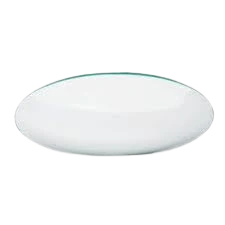In this blog post, our focus will be on understanding chemistry and exploring the applications of watch glass in laboratory settings. Watch glass is an incredibly versatile tool that plays a crucial role in scientific experiments and analysis. We will examine its unique properties, a diverse range of applications, and the significant benefits it provides to researchers and scientists.

1. Introduction to Watch Glass
Watch glass is a circular, concave-shaped glass plate with a slight convexity. It typically ranges in diameter from 50 to 150 millimeters and is commonly made from borosilicate glass. This material is highly resistant to thermal stress, making it suitable for a wide range of laboratory applications. The smooth, polished surface of the watch glass ensures optimal clarity and visibility during experiments.


2. Properties and Characteristics
2.1 Transparency and Clarity
Watch glass is known for its excellent transparency, allowing researchers to observe and monitor reactions and samples without any hindrance. The clarity of the glass facilitates accurate analysis and enables scientists to make informed decisions based on their observations.
2.2 Chemical Resistance
One of the remarkable properties of borosilicate glass, the material commonly used in watch glass production, is its high chemical resistance. This characteristic makes watch glass suitable for a variety of chemical experiments, as it can withstand exposure to corrosive substances and remains unaffected by most acids, bases, and organic solvents.
2.3 Thermal Stability
Watch glass is designed to withstand high temperatures, making it a reliable choice for experiments involving heating or cooling. It can tolerate sudden temperature changes without fracturing, ensuring the safety and integrity of laboratory operations. This feature is particularly important when working with volatile or reactive substances.


3. Applications of Watch Glass
Watch glass finds applications in numerous laboratory procedures across various scientific disciplines. Let’s explore some of its common uses:
3.1 Evaporation and Condensation
Watch glass acts as an excellent cover for beakers and flasks during evaporation and condensation processes. It helps prevent contamination, while still allowing for the exchange of gases. The concave shape of the watch glass facilitates the collection and return of condensed liquids back into the original container, minimizing sample loss.
3.2 Crystallization and Drying
In crystallization experiments, watch glass serves as an ideal platform for growing crystals. Its large surface area allows for the controlled evaporation of solvents, promoting crystal formation. Additionally, watch glass can be used for drying small amounts of solid samples, as the flat surface ensures efficient air exposure.
3.3 Weighing and Sample Preparation
Watch glass provides a convenient surface for weighing solid samples using an analytical balance. Its low profile allows for easy transfer of materials and minimizes the risk of sample loss. Furthermore, watch glass is often used for preliminary sample preparation, such as mixing and grinding, before transferring the sample to other containers or apparatus.
3.4 Covering and Protection
When conducting experiments that require protection from external elements, watch glass can be used to cover Petri dishes, reaction vessels, or culture plates. It acts as a shield, preventing dust particles, contaminants, or evaporation during prolonged procedures. The transparent nature of the watch glass enables continuous visual monitoring.



Conclusion
understanding the chemistry and applications of watch glass in the laboratory is essential for researchers and scientists. Watch glass, with its circular, concave shape and properties like transparency, chemical resistance, and thermal stability, offers numerous benefits in scientific experiments. It finds versatile uses such as covering beakers and flasks during evaporation and condensation, facilitating crystallization and drying processes, providing a convenient surface for weighing and sample preparation, and acting as a protective cover for various containers. Its transparent nature allows for continuous visual monitoring, ensuring accurate analysis and informed decision-making. Overall, watch glass is a valuable tool that enhances laboratory operations and contributes to the success of scientific investigations.


FAQS
Q: What is watch glass and what are its unique properties?
A: Watch glass is a circular, concave-shaped glass plate commonly made from borosilicate glass. It has a diameter ranging from 50 to 150 millimeters. Its unique properties include excellent transparency and clarity, high chemical resistance, and thermal stability. The smooth, polished surface of watch glass ensures optimal visibility during experiments.
Q: What are the applications of watch glass in the laboratory?
A: Watch glass has diverse applications in laboratory settings. It is commonly used as a cover for beakers and flasks during evaporation and condensation processes, facilitating the exchange of gases while preventing contamination. It serves as a platform for crystallization experiments and allows for controlled evaporation of solvents. Watch glass is also used for weighing solid samples, preliminary sample preparation, and as a protective cover for containers during experiments.
Q: How does watch glass contribute to accurate analysis and decision-making?
A: The transparency and clarity of the watch glass enable researchers to observe and monitor reactions and samples without hindrance. This facilitates accurate analysis and empowers scientists to make informed decisions based on their observations. The continuous visual monitoring provided by watch glass ensures the integrity of laboratory operations.
Q: What makes watch glass suitable for experiments involving volatile or reactive substances?
A: Watch glass is designed to withstand high temperatures and sudden temperature changes without fracturing. This thermal stability makes it a reliable choice for experiments involving heating or cooling, particularly when working with volatile or reactive substances. Watch glass ensures the safety and integrity of laboratory operations in such conditions.
Q: In what ways does watch glass contribute to the success of scientific investigations?
A: Watch glass enhances laboratory operations by providing a versatile tool with a wide array of applications. Its transparency, chemical resistance, and thermal stability contribute to accurate analysis and informed decision-making. Watch glass facilitates various processes such as evaporation, condensation, crystallization, drying, weighing, sample preparation, and covering containers for protection. Its use in scientific investigations promotes efficiency, accuracy, and reliable results.
